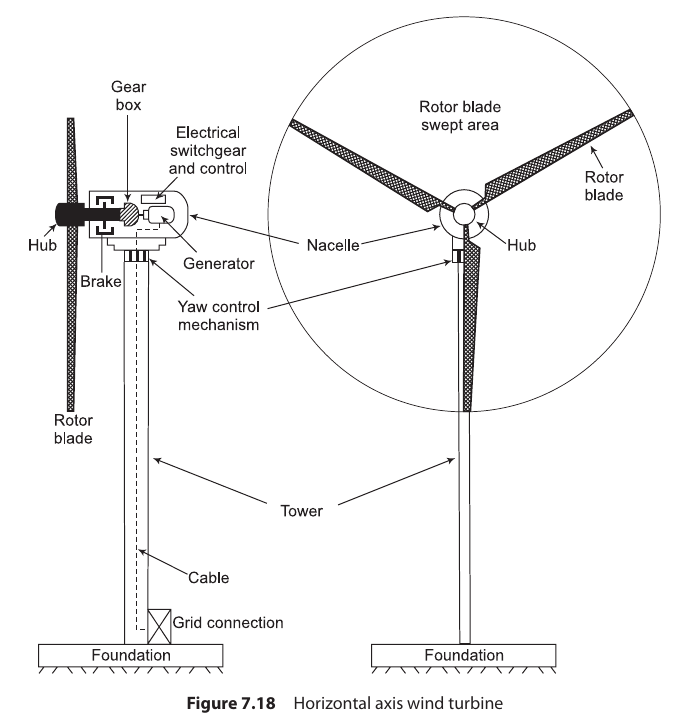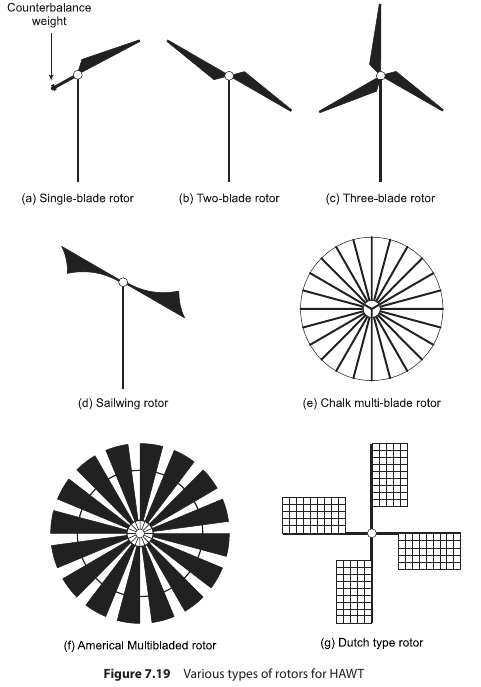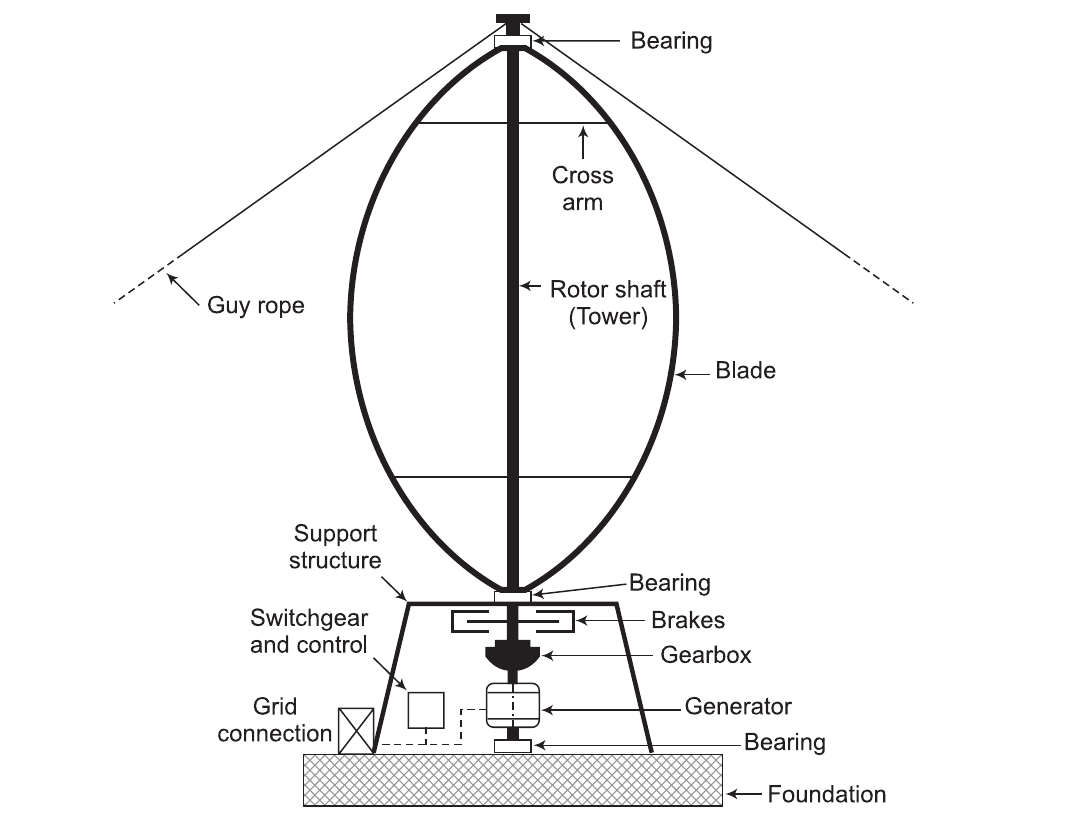U2. Wind and Hydro Power
- wind speed measurement should be made at an effective height of 10 m above
- Power (Po) available in wind, is equal to kinetic energy rate associated with the mass of moving air, \(P_0 \ = 1/2 * (\rho \ A \ u_0) u^2_0\) OR \(P_0 \ = 1/2 * (\rho \ A) u^3_0\)
-
Power available in wind per unit area: \(P_0/A \ = 1/2 \ \rho\ u^3_0\)


-
The Betz criterion derived using the principles of conservation of momentum and conservation of energy suggests a maximum possible turbine efficiency, (or power coefficient) of 59 per cent
Horizontal Axis Wind Turbine - center of turbine is horizontal - The blades rotate parallel to the wind - Components: 1. Turbine Blades -> made of high-density wood or glass fiber and epoxy composites 2. Verical Axis Wind Turbine - For your wind/yard - Axis of rotation is perpendicular to the wind - Types 1. Drag Type - Simpler less efficient 1. Lift Type - More Complex More efficient - Lower blade tips speed -> Lower Noise - Omnidirection -> No yaw needed for readjusting turbine accordingly
 HAWT Wind Turbine
1. Main Components
1. Turbine Blades
2. Hub
3. Nacelle
4. Yaw Control Mechanism
5. Tower
2. Types of Rotors
1. single-blade rotor
2. Two-blade rotor
3. Three-blade rotor
4. Sailwing rotor
5. Chalk multiblade rotor
6. Americal multibladed rotor
7. dutch type rotor
HAWT Wind Turbine
1. Main Components
1. Turbine Blades
2. Hub
3. Nacelle
4. Yaw Control Mechanism
5. Tower
2. Types of Rotors
1. single-blade rotor
2. Two-blade rotor
3. Three-blade rotor
4. Sailwing rotor
5. Chalk multiblade rotor
6. Americal multibladed rotor
7. dutch type rotor
 3. Generator
4. Grid
5. Gearbox, brake
3. Generator
4. Grid
5. Gearbox, brake
Vertical Axis Wind Turbine
- accept wind from any direction, eliminating the need of yaw contro
- gearbox, generator etc. are located at the ground, thus eliminating the heavy nacelle at the top of the tower.
- inspection and maintenance also gets easier and reduces cost

Hydro Energy¶
- Types
- Low, Medium, High Heads
next Unit: U3. Biomass